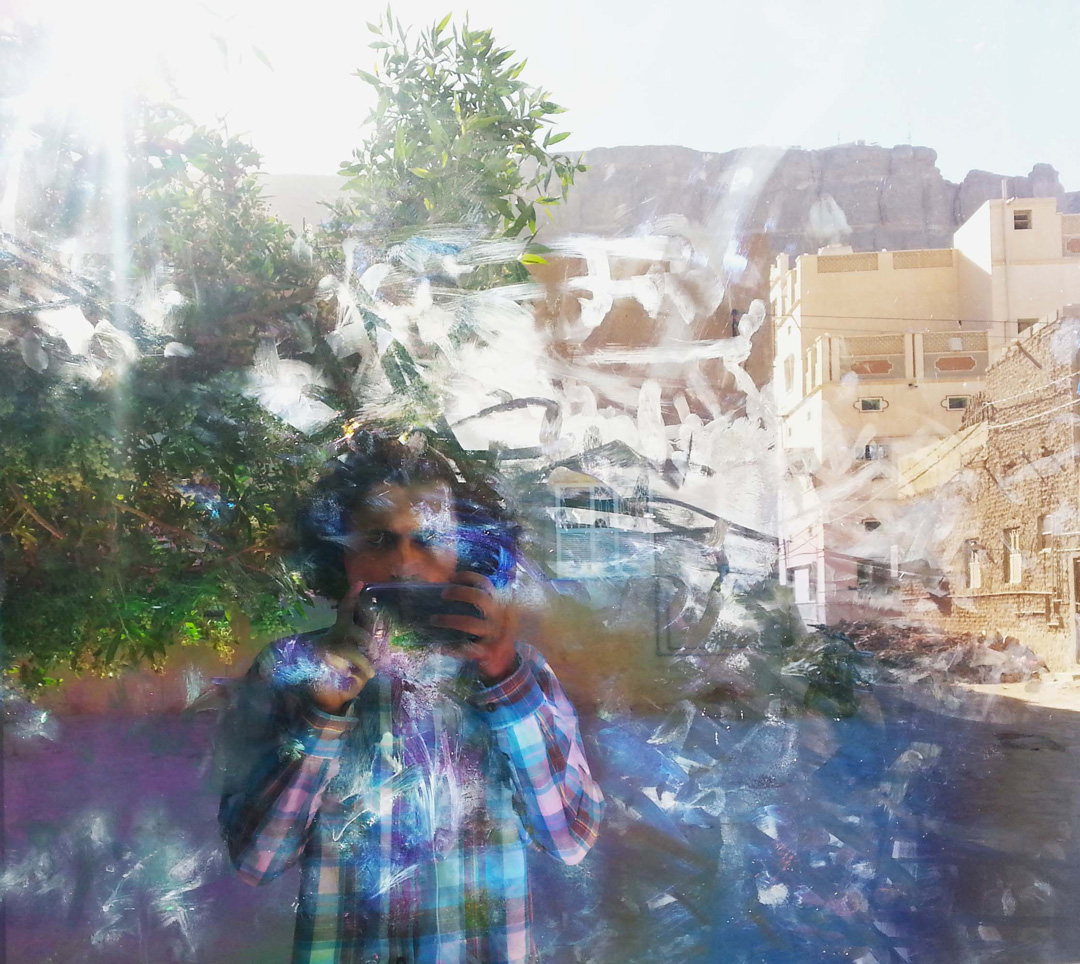
This post is also available in: العربية (Arabic)
“We’re never really speaking, unless we’re speaking to a mirror.”
Saba al-Sulayhi
In this entertaining photo essay by Rahman Taha, we are introduced to his experiences with his camera and… a mirror. Rahman says: “It’s been over three years now and across three continents that I have been working on this project. I have taken pictures and attempted to catch a glimpse of the self, using a mirror and a camera.”
Because we are so used to looking at ourselves in mirrors and not in photographs, the pictures taken of us with cellphones seem to create a slightly different image. The Random House Dictionary defines the self-image as “the idea, conception, or mental image one has of oneself”. The mirror shows a reflection, where right becomes left and left becomes right, but you remain you. However, our image in the mirror appears more beautiful than that captured by the camera. This may be due to our certainty that our mirror image will only be seen by ourselves, so we do not need to strike a specific pose or smile a certain way as though posing for a driver’s license or a passport photo.
But what about pictures taken with our cellphones? Are they the same as the images reflected in the mirror? The Oxford Dictionary defines a ‘selfie’ as a photograph taken of a person by themselves. That means no one else could have taken that photo. This is where the English term ‘selfie’ was coined from the word ‘self’, meaning the person involved. It is common for people to use a smartphone or small cameras that specialize in selfies to post these photos on social media.
And what about our emotions and what we are feeling the moment we take that selfie? Can a mirror or camera phone reflect those accurately? Water is the oldest mirror known to humanity, the surface on which humans first saw a reflection of themselves. But each human individual had a different reaction upon seeing their own reflection for the first time. They displayed mixed emotions, from anger to joy, surprise to curiosity to self-adoration. This was also the case of Greek mythology’s Narcissus, who later became a symbol of self-love to the point of excess, so much so that the term ‘narcissist’ was derived from his name. It was said that people’s eagerness to reflect upon their own image led to the creation of the mirror from pieces of polished stoned 6,000 years ago in Turkey, which was then developed by people in Mesopotamia into copper mirrors 4,000 years ago, followed by the Egyptians and Chinese until the Phoenicians of modern-day Lebanon, who are said to have developed the mirror using glass, which people worldwide later adopted.
It is said that some ancient primitive tribes members did not have the ability to differentiate between the image reflected in the water and their true human spirit. So they avoided looking in the water in order to avoid seeing their own reflection, for fear that a crocodile or fairy would devour their reflections, and in turn rob them of their souls. And in the Middle Ages, it was a common belief that mirrors were portals to other worlds, so people buried mirrors with the bodies of their dead.
The mirror also appears in Sufi literature indicating the heart. The mirror’s reflection of a lost heart is one of a recluse from the universe, but the reflection of a knowing heart cannot be hidden by the universe from its creator. In literature written about sleep and dreams, the mirror represents the heart’s reflection and can be seen as a sign of imagination and vanity, according to Ibn Sirin’s interpretation. And due to its relation to looking, thinking, feeling, and mixing truth with falsehood, the word ‘mirror’, or ‘mir’at’, was created, which in Arabic is the name of a machine derived from the verb to see (al-ru’yah), associated with seeing, self-reflection and the imaginative vision. ‘Mirror’ is also linked etymologically to negative moral concepts, such as (Rya’a) ‘ hypocrisy’.
The French psychologist Jacques Lacan associated the mirror with the early stages of a child’s life when, after the initial sixth months, the child begins to sense their way to themselves and to others. Lacan considers it an accompaniment to the formation of human subjectivity, especially in terms of a perceptual system of the human being to which perception, consciousness and subconscious are related. In terms of poetry, the mirror is associated amongst other things with the self and the other, with the body, with transformation, with seeing, dreaming, illusion and perception.
Photo Essay: Talking to the Mirror
















